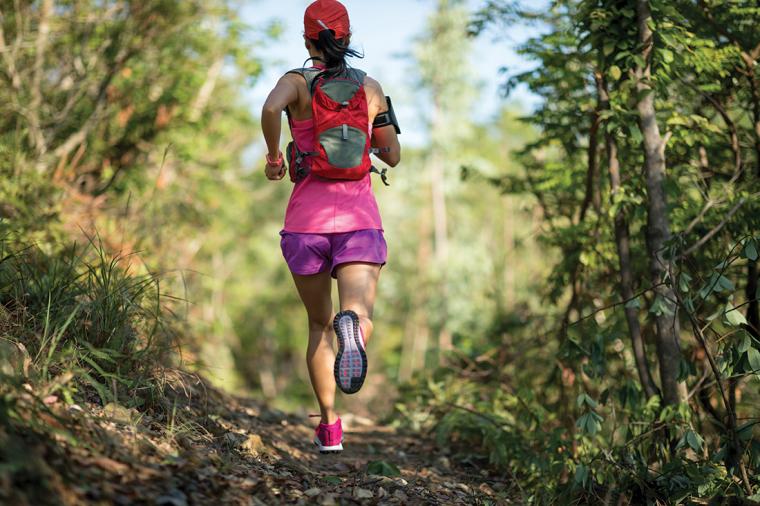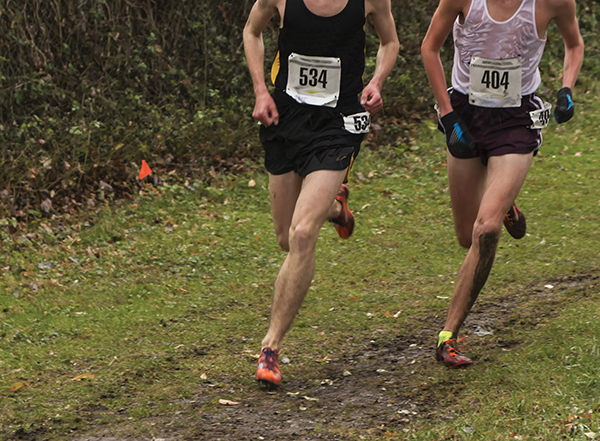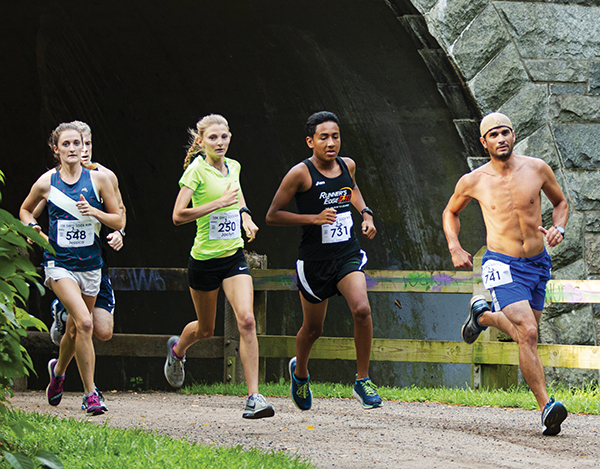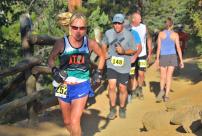
The American Trail Running Association (ATRA) was formed to represent and promote trail running mountain running and ultra trail running.
ATRA’s definition of trail runs is fairly broad-based, including not only mountain single-track trails, but also wide dirt paths and any terrain not on paved surfaces. ATRA is not an event owner but instead provides resources for race directors, athletes and fans of the sport, including a nationwide website listing of trails, as well as trail races so that runners can find ways to participate. In addition, ATRA provides listings of coaches and camps for runners interested in improving their performance. It also offers education for race directors and provides a standards program for those interested in putting on safe and enjoyable events.
Here, Nancy Hobbs, the founder and executive director of the American Trail Running Association, shares some of her insights on the sport.
Trail Running is Growing
I would say the sport is on an upward trajectory. There are more events – not just more races but more camps, clinics and trail running festivals. We’re seeing multi-day events and more stage races as well, and even film festivals featuring trail running.
Another development has been the increase in events of longer distances. Previously, trail marathons were popular, meaning the standard 26.2 mile distances, but now, we’re seeing ultra races not just of 100 miles, but 250 miles, 300 miles or longer.
Events are growing at both the domestic and international levels, which is an enormous measure of success. There are more event series being offered, rather than just one-off races. It gives athletes a chance to earn points and to establish themselves in rankings, and it feeds into the excitement around the sport.
More Cities are Establishing Trails – and Marketing Them

While there are certainly pockets of the country where there are more trails (for example, in the mountains of Colorado, California, the Pacific Northwest and the Southeastern U.S.), trail running can be found almost everywhere. Cities recognize the value of green space but they also see the appeal of having an amenity that allows people to connect with nature. More sports commissions are also seeing the importance of trails when it comes to attracting competitive events, as well as sports-focused business meetings.
I recently attended the US Trail Running Conference in Knoxville, Tennessee. That city has a wonderful urban trail system and one morning, we did a six-mile run that started on a wider gravel path, went through a forest, took some twists and turns and then came out and went past the river; it had a whole mix of different surfaces, which is something trail runners love. It is one example of the way a trail has really become a selling point for a destination.
There is also a broader understanding of the use of sports facilities and the opportunities they present. Destinations with ski resorts used to be deserted in the summer months; now, ski resorts are starting to host trail running and mountain bike racing when the snow is gone.
Trails are Seeing More Diversity and Inclusivity
There are more opportunities now than ever before for a wider range of people to become involved with trail running. Advocates of the sport have really helped spread the word that the trails are for everyone.
While the largest proportion of racers is men, we’re starting to see a lot more kids as well as young adults – though they are mainly in the shorter distance races, rather than the ultras. There are race registration categories for U18 and U20, and those have resulted in bringing in a lot of younger athletes; in fact, many of those are coming over from cross country running in high school or college. Camps and clinics in trail running are also serving as a feeder system to bring those athletes in and keep the sport growing.
Increasing the number of female athletes in trail running has been another goal. In order to attract more women, we are seeing events presented more thoughtfully. There may be stations where women can do breastfeeding, and some events are even offering childcare.
Additionally, races are becoming inclusive. The image of trail runners used to be that of white men, age 50 and up; now, the race photos are starting to show racers of color as well as those who are trans, BIPOC, LBTQIA+ and people of all sizes. Athletes who might not have tried trail running are starting to say, “Hey, that person looks like me; I can do this too.”
Events are becoming very creative to try to attract a broad range of participants. Some are offering lower registration rates, or even free registration, for racers from marginalized communities. After all, trail races, particularly at longer distances, can be very expensive.
Another thing we have been tackling is letting people know that it is okay if someone does not run every step of the way in a race. New racers might be intimidated by the thought of running on a trail and we want to let them know that we just want them out there – we’re not worried about how fast they are.
Trail Running is Getting More Visible

Trail running has become much more of a spectator sport than it ever was. We’re seeing an increase in media coverage of trail events and at the same time, there is more live streaming of events, meaning you can watch from afar – or in person. More events are becoming spectator-friendly, and that has really fueled the growth of the sport.
That visibility has fed into better business for trail running. More apparel sponsors are coming on board – not just shoes but clothing of all types, and not just for men but for women and kids, and for people of different sizes. That kind of investment in the sport is another good indicator of its growth, as well as of its widening appeal.
The Discipline of Canicross
Awareness of canicross, or offroad running with your dog, is increasing; there are more competitive events than there used to be. While it’s not exactly mainstream at the moment, it is a good opportunity for people who love to run with their dogs; the insurance policies of many traditional trail races stipulate that dogs are not allowed on the course. There are websites devoted to that discipline, which allow people to learn more about it.
Challenges Facing Race Directors and Event Owners
Climate change is a significant concern in trail running. Because your event is on a trail, it is subject to problems like poor air quality that might be caused by wildfires, even those that are miles away. Other weather events like rain or snow can also make trails slippery and cause problems for athletes.
We recently saw how badly the hurricanes affected cities in the Southeast; trails in some parks were decimated and will need to be completely rebuilt, as will some sections of the Appalachian Trail. A great deal of remediation work is underway now, and we’re hoping to see the trails become usable as soon as possible.
Trail Use Initiatives
During the pandemic, when gyms were closed, more people than ever before began exploring their local trails – running, hiking, biking, etc. We also started seeing new populations out there, including athletes with physical challenges and those
using adaptive equipment.
To try to encourage this wider type of use, ATRA became involved in an initiative known as Trails are Common Ground™ (trailsarecommonground.org), a coalition of people, businesses and advocacy groups working together to create a safe, inclusive and respectful environment for trail users.
Overall, there is a lot of growth and excitement around the sport. At the same time, sustainability has to remain a key element. You have to think about and respect the land you’re running on – you have to understand its history and think about what it means to the native people who have lived there. There is always something to learn, and we need to be aware of just how lucky we are to have that access to this land. SDM

